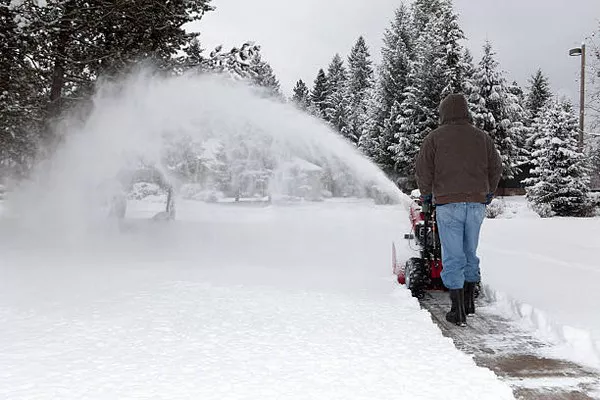As winter blankets the landscape with a thick layer of snow, homeowners often rely on snowblowers to efficiently clear driveways and walkways. While these machines are designed to tackle the toughest snow conditions, there is a common concern among users – can you flood a snowblower? In this article, we will explore the risks associated with flooding a snowblower, the reasons behind it, and practical solutions to prevent and address this issue.
Understanding Snowblower Engines:
Before delving into the possibility of flooding a snowblower, it’s crucial to grasp the basics of how these machines operate. Snowblowers are equipped with small engines that power the auger and impeller mechanisms responsible for throwing snow. Most snowblowers use either a two-stroke or four-stroke engine, each with its own set of characteristics and maintenance requirements.
Can a Snowblower Be Flooded?
Yes, like any internal combustion engine, a snowblower’s engine can be flooded. Engine flooding occurs when there is an excessively rich air-fuel mixture, preventing the engine from starting. The most common causes of snowblower flooding include overpriming, a malfunctioning carburetor, or operator error during startup.
Overpriming:
Overpriming happens when the engine is flooded with fuel during the priming process. Priming is necessary to fill the carburetor with fuel before starting the engine. However, excessive priming can lead to an overly rich fuel mixture, making it difficult for the engine to ignite.
Malfunctioning Carburetor:
The carburetor plays a crucial role in regulating the air-fuel mixture entering the engine. A malfunctioning carburetor can disrupt this balance, causing the engine to flood. Issues such as a stuck float, clogged jets, or a faulty needle valve can contribute to an overly rich mixture.
Operator Error:
In some cases, operator error during the startup process can lead to a flooded snowblower engine. This may include not following the correct starting procedure, such as holding down the primer bulb for too long or not adjusting the choke properly.
Risks of a Flooded Snowblower:
Flooded snowblower engines pose several risks, both to the machine itself and the user’s overall experience. The primary concerns include:
Difficulty Starting: A flooded engine is challenging to start, requiring multiple attempts and often causing frustration for the operator.
Potential Engine Damage: Continuous attempts to start a flooded engine can lead to excessive fuel accumulation in the combustion chamber, potentially causing damage to the engine components.
Increased Wear and Tear: Frequent flooding and subsequent attempts to start the engine can contribute to increased wear on critical engine parts, shortening the overall lifespan of the snowblower.
Preventing Snowblower Flooding:
Preventing a snowblower from flooding involves adopting proper maintenance practices and following correct starting procedures. Here are some tips to help users avoid engine flooding:
Follow Starting Procedures: Adhering to the manufacturer’s recommended starting procedures is crucial. This includes priming the engine the correct number of times, adjusting the choke appropriately, and using the recoil starter method as instructed.
Regular Maintenance: Keep the snowblower well-maintained by following the manufacturer’s maintenance schedule. This includes cleaning or replacing the air filter, checking and adjusting the spark plug gap, and inspecting the carburetor for any issues.
Use Fresh Fuel: Stale or contaminated fuel can contribute to carburetor issues and engine flooding. Always use fresh, clean fuel and consider using a fuel stabilizer if the snowblower will be stored for an extended period.
Addressing a Flooded Snowblower:
If a snowblower engine becomes flooded, it’s important to address the issue promptly to avoid further complications. Here’s a step-by-step guide to help users tackle a flooded snowblower:
Wait for a Few Minutes: Allow the engine to sit for a few minutes to let excess fuel evaporate. This can help reduce the richness of the air-fuel mixture.
Adjust the Choke: If the engine has a choke, ensure it is in the correct position. Adjusting the choke can help regulate the airflow and improve the combustion process.
Use the Recoil Starter: Instead of relying solely on the electric starter, use the recoil starter method. This can provide a stronger initial pull, helping to clear excess fuel from the engine.
Consult the Manual: Refer to the snowblower’s manual for specific troubleshooting steps and recommendations provided by the manufacturer.
SEE ALSO Do Snowblowers Scratch Concrete?
Conclusion:
While it is possible to flood a snowblower engine, understanding the causes and taking preventive measures can help users avoid this issue. Regular maintenance, following correct starting procedures, and prompt action in the event of a flooded engine are essential to ensure a smooth and reliable snowblowing experience. By staying informed and practicing proper care, users can maximize the efficiency and longevity of their snowblowers even in the harshest winter conditions.

